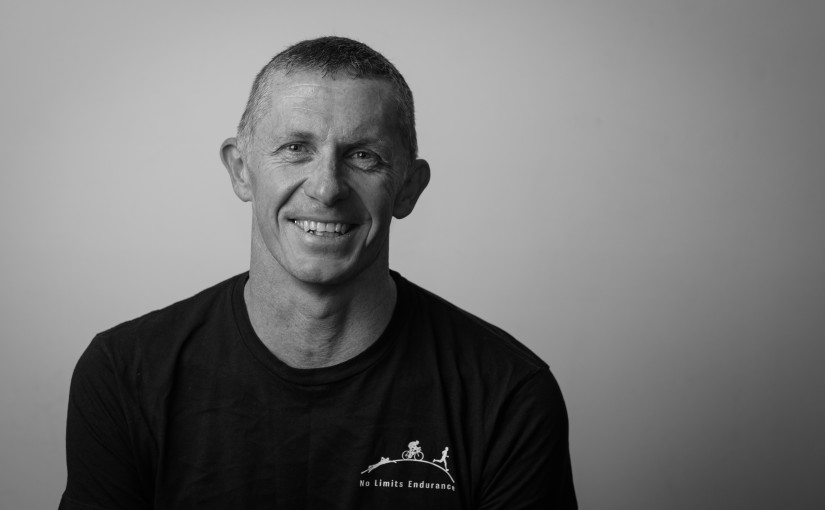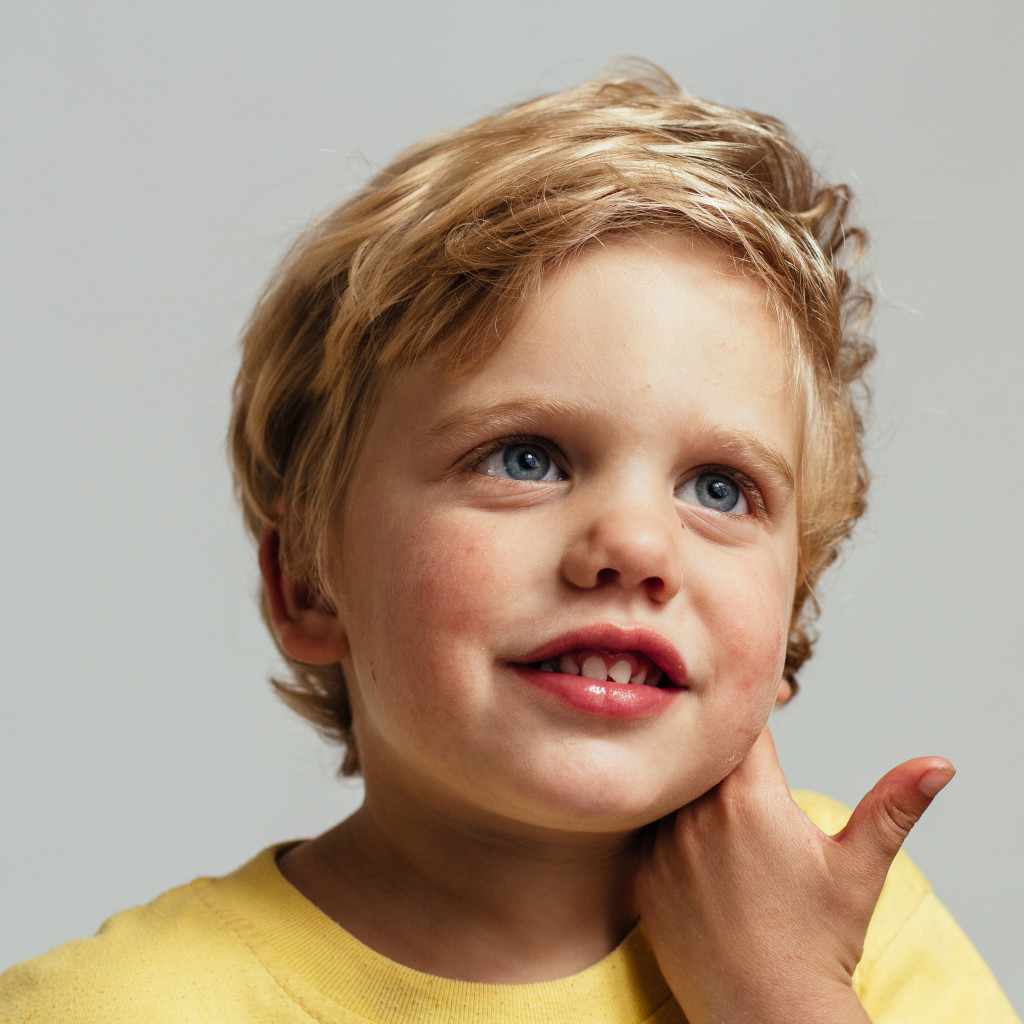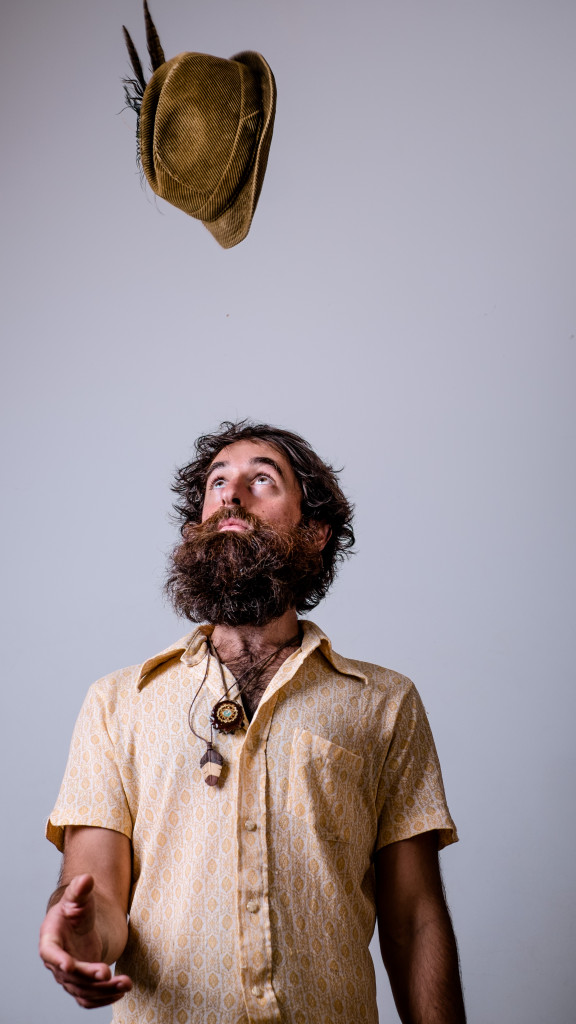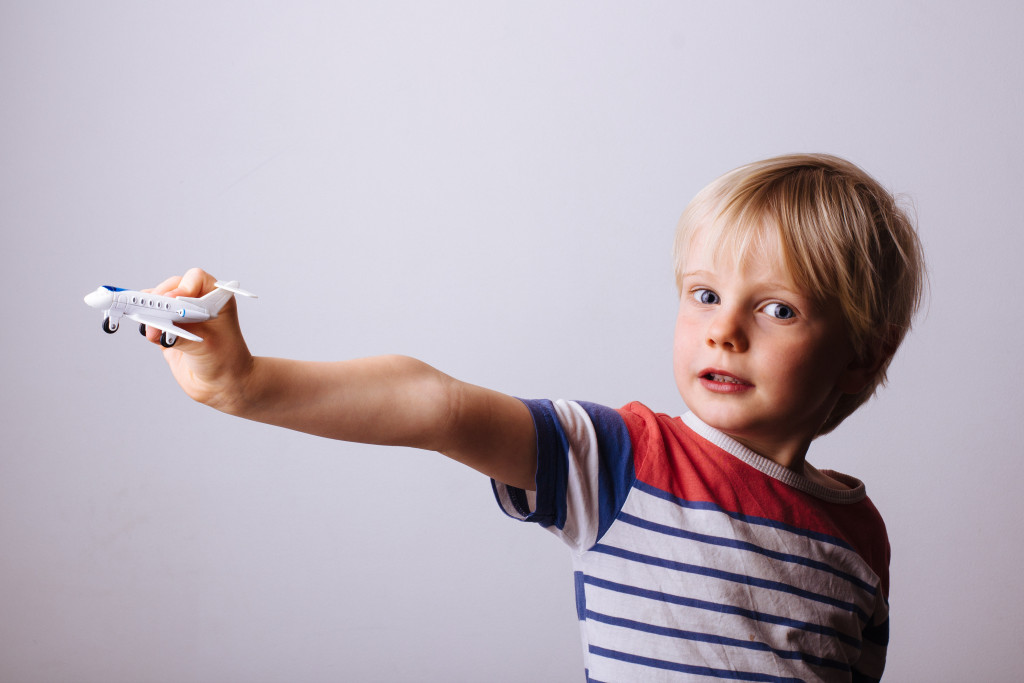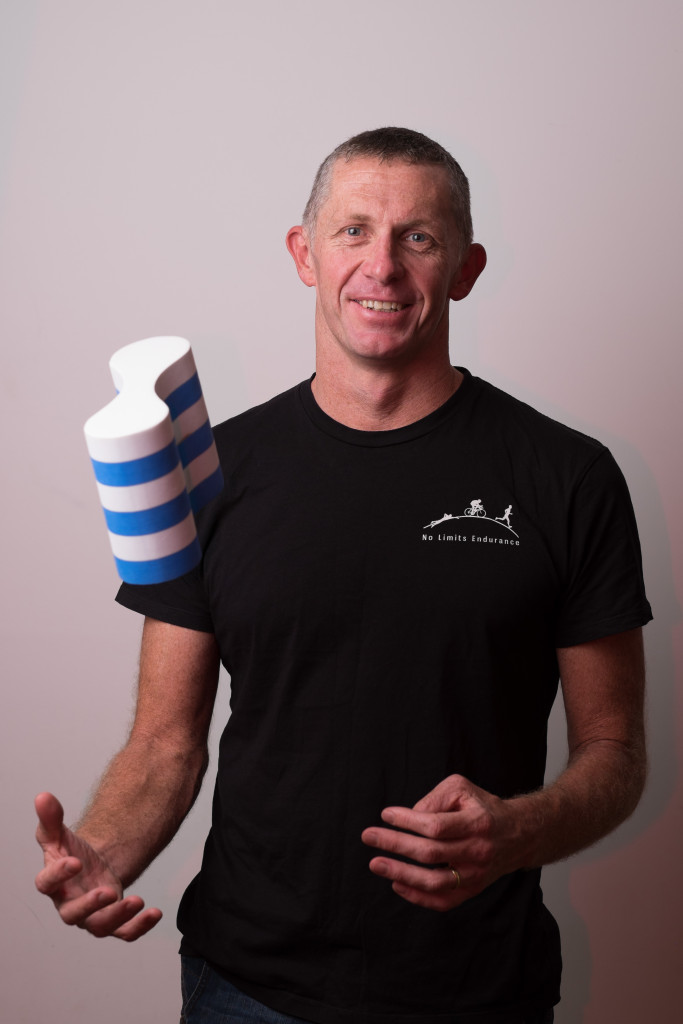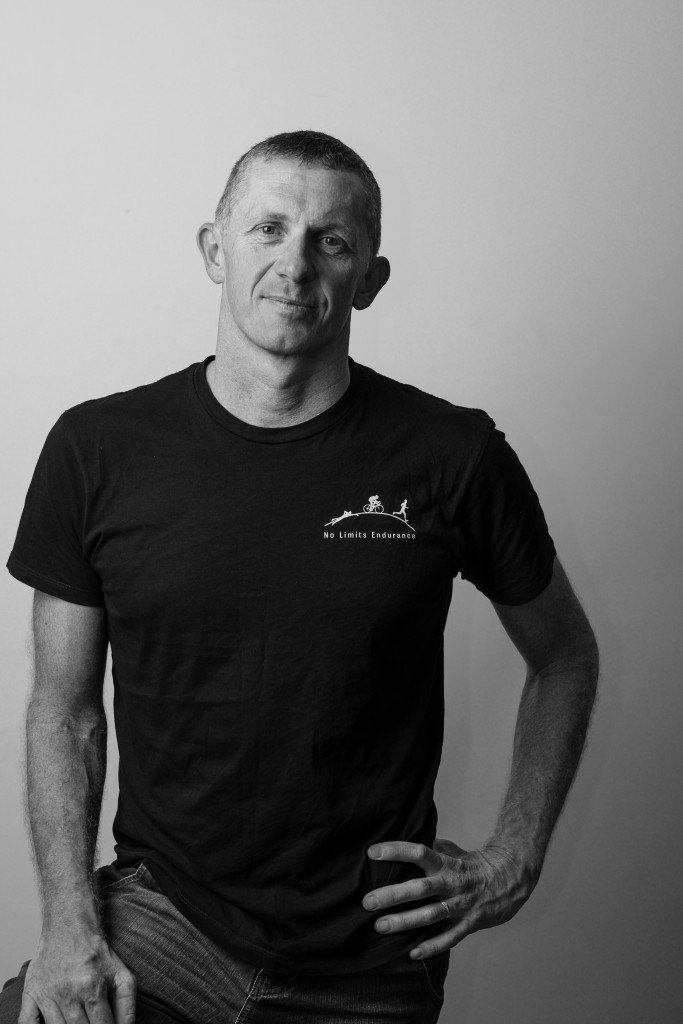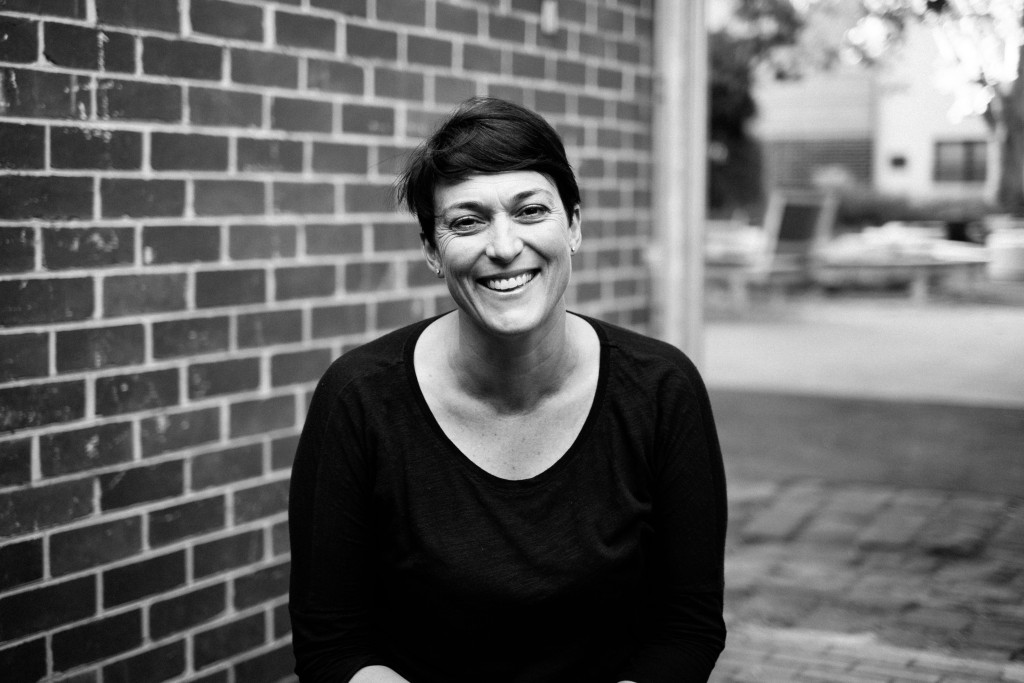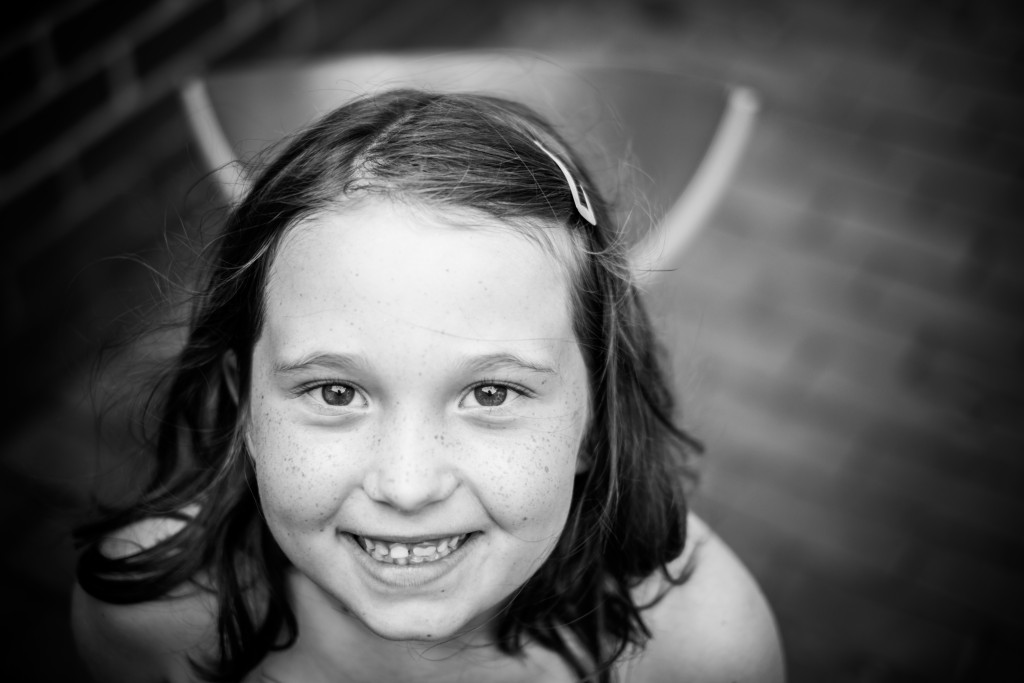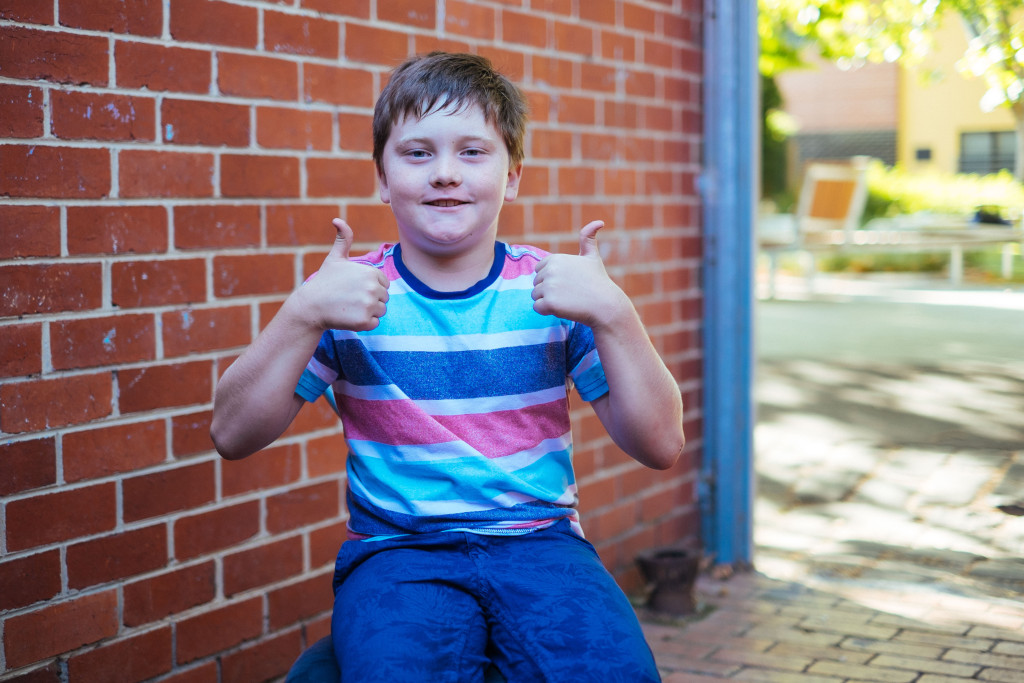On the 14th of December last year I purchased a brand new camera, on the 30th of December I took a photo of friend who was about to announce to the world his plan to do 8 Ironmans in 8 days in the eight States and Territories of Australia. His name was Craig Percival, and he was kind enough to have me film a documentary about his attempt to become the first person to ever complete what became known as the 8in8in8.
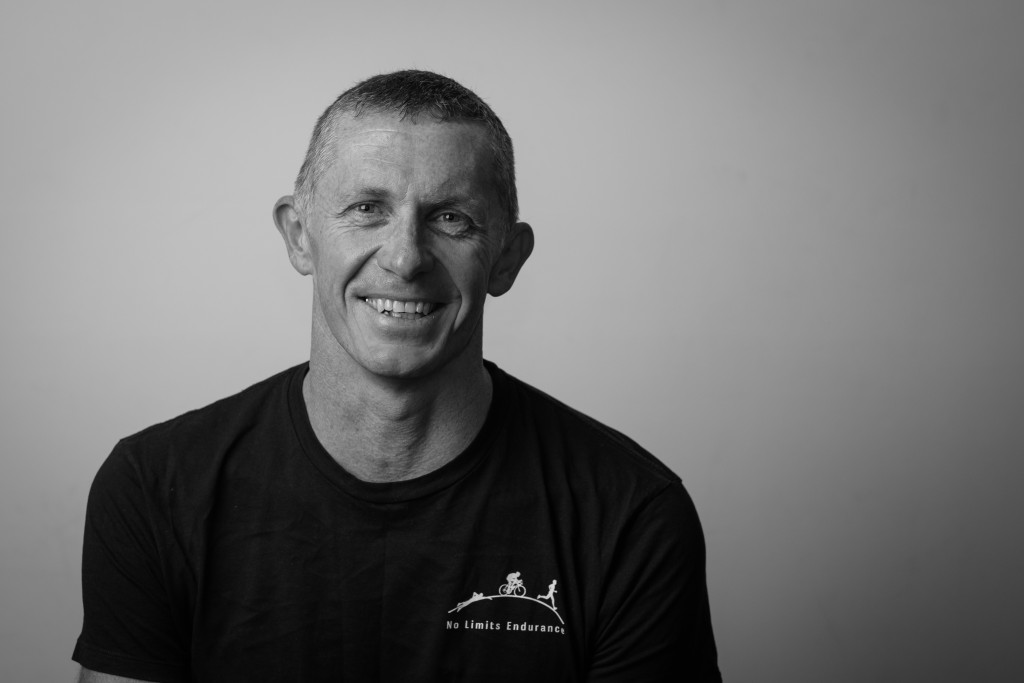
On the 14th of December this year I was staring at the at that same photo I had taken of Craig, but this time it was in a booklet that had been handed out at his funeral. At age 45 he died from a blood clot while recovering from an operation on his knee.
Amidst the tragedy and senselessness of his death, the photographer in me was actually really proud that his family had chosen a photo that I had taken to represent the person he was. I felt that in a very small way I had done something to help…and now I’m asking for you to do something to help.
A page has been set up to help the family that Craig left behind, and I would love for you to put some money towards it. But I feel it’s only fair that I give you a little something in return…so in keeping with the theme of 8in8in8…here are 8 tips that I’ve learnt about taking portraits, and how they relate to the photo I took of Craig.
1. Us and them
I’m sure there are people out there whose public persona is actually a 100% reflection of the person they are. For the rest of us we are walking a constant dichotomous tightrope between the person we are, and the person we want people to think we are. We normally keep this bubbling away under the surface, but a portrait photo is a weird time when a single image is going to conspicuously identify who we are, and so as the photographer you have to decide which incarnation of the person you want to capture. If you capture the person they want to project, then you’ll probably miss the chance to capture something honest or slightly flawed…but then again, they’ll probably still want to talk to you after you publish the photos on social media. Alternatively, if you capture something a little more raw or candid, you will probably capture something that will get you a dozen likes on Instagram/Flickr/500px…but you’re probably not going to get that ‘Thanks so much for taking my photo’ email that were hoping for…or perhaps more importantly that ‘I’m going to recommend you to my friends’ email that you were hoping for.
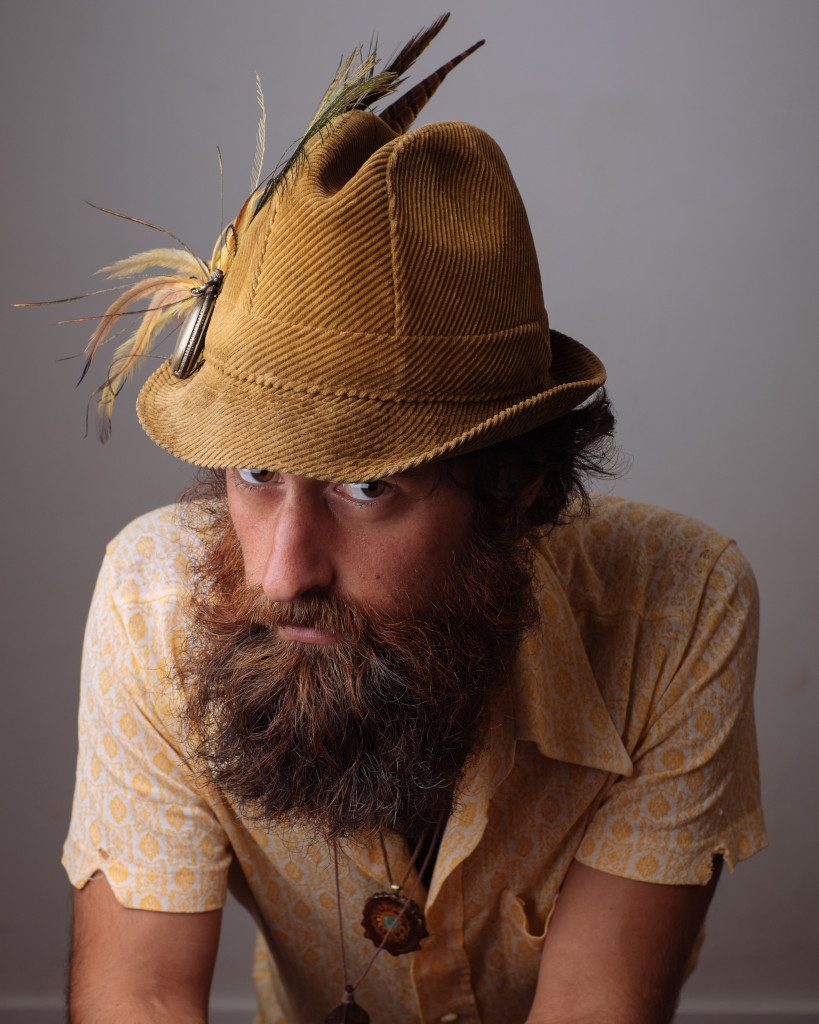
So my simple answer, is shoot both. Start by getting a few traditional shots of them smiling in a traditional pose…then move on to a couple of shots where you can try to capture a break in the facade. Maybe give them prop, maybe move them into a space where they are really comfortable, but do what you can to try and capture an unguarded moment.

Craig actually has an easy smile…but he’s not someone who will flash a Hollywood smile on cue. So I made a few jokes and then as I delivered the punch-line on the last one, I snapped as soon as I saw him start to smile.
2. Everything is awesome
If you are taking photos of famous people or unashamed extroverts, then you’re probably not reading this blog. The rest of us are taking photos of people who really don’t want to be having their photo taken…they may want the end product…but they’d rather not go through the process of getting there. So if they’re feeling vulnerable and exposed, the last thing they need is you appearing out of your depth or annoyed.
They will blink just as you take the shot, you will stuff up your exposure or your composition…but they don’t need to know any of that. You just need to keep saying ‘That was great! I’m going to grab another one of those’ or ‘That was perfect. Let’s try something a little different’. If you fill the room with positivity and encouragement, you’re going to get a much better photo.
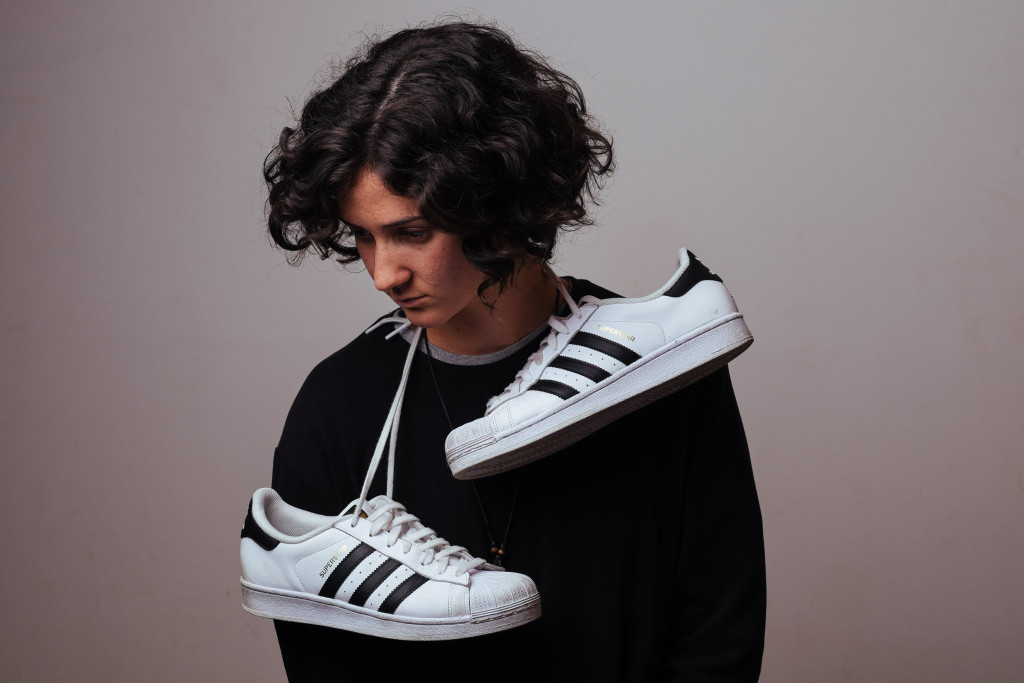
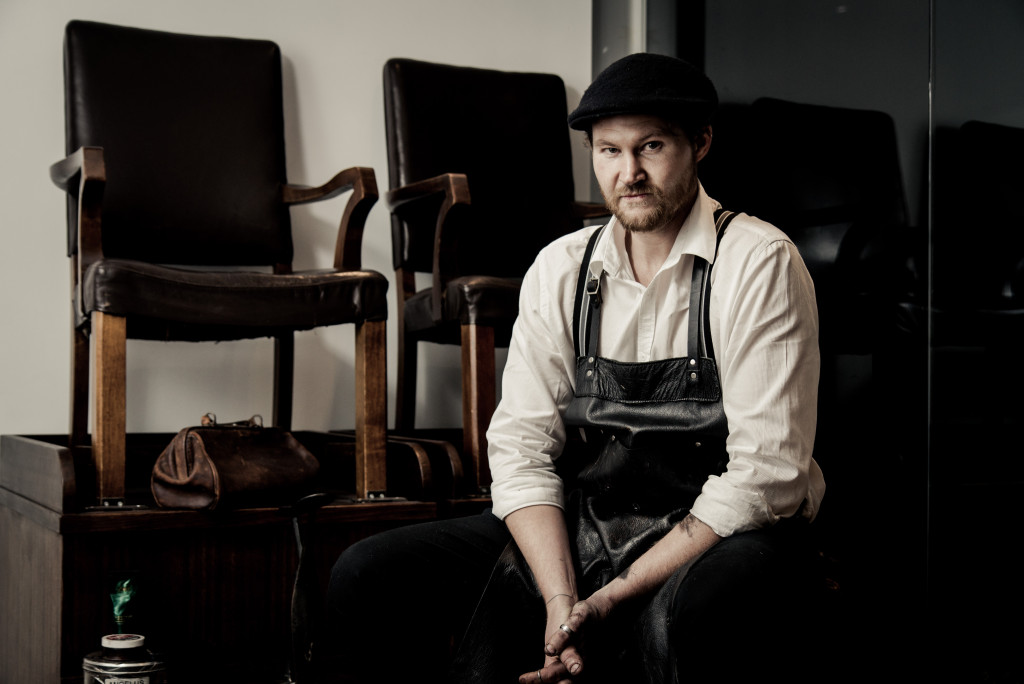
Shooting with a new camera I couldn’t for the life of me work out how to override the ‘preview’ mode on the EVF. In short, because I was shooting with a flash I had the shutter speed at about 1/160 which was really dark (but when I took the photo the flash would fire and the light the scene). The display on camera was showing me a preview of what the shot was going to look like but it couldn’t account for the flash, so I was basically looking at a black screen. Normally you just look through the optical viewfinder and see exactly what you can see with your naked-eye. But the Fuji X-T1 doesn’t have an optical viewfinder and so I was desperately hunting through menus trying fix the problem…all the while pretending that everything was going swimmingly. I eventually worked it out…and hopefully Craig was none the wiser.
3. Flash
My favourite thing when taking a portrait, is when you just capture a fleeting look or moment. You can’t ask someone to pose and give you that look…it’s just something that happened organically. That’s why I love using a flash for my portraits, it gives you the chance to freeze a moment. Now clearly, I’m not talking about the pop-up flash on your camera, I’m talking about some sort of off-camera flash…and ideally some sort of diffusion like an umbrella or soft-box. And yes I’m sure you can do the same thing with a quick enough shutter speed. But as someone who swore black and blue that I would never use a flash…I love using a flash in portraits, and I know that my best photos have been taken using one.
If you don’t have a flash (and realistically you’re looking at hundreds of dollars to get a flash, and triggers, and diffusers) then just hire one with some equipment for a weekend and have a go. It will only cost about $70 to hire a flash, stand, umbrella and triggers, and you’ll learn a hell of a lot. For bonus points, download the OneLight video from Zack Arias.

I picked up some second-hand strobes and gear for about $200, and the photo I took of Craig was the first time I’d used it.
4. Something to do
One of my favourite things to do while watching the news or current affairs is try to guess what direction was given to the person on camera for cutaway footage. For example ‘OK, just walk over to that book case and take out a book’ or ‘just walk past the camera and sit down at the chair’ or even ‘just walk towards the camera’. If you ask an actor to do this, they will nail it. If you ask a normal person to do it, they will look like a very unconvincing version of themselves doing something unconvincing. Why? Because they’re over-thinking it. If you could look inside their minds there would an inner-monologue yelling ‘OK left foot then right foot…No wait…right foot then…no, I was right the first time…left foot then left foot – OH GOD WE’VE FALLEN OVER!!!’
It’s the same with a portrait shot. Tell a person to ‘just look natural’ and they will spend the next five minutes trying to work out where their hands would be if they were being natural. So wherever possible, give them something to do, whether it’s looking down and then looking up to the camera, or rubbing their hands, or playing with a prop…just give them something that can briefly distract them from the fact that you’re taking a photo of them.
While shooting these photos of Craig I actually gave him a pull-bouy to throw up in the air and I took a couple of photos of that, which looked pretty cool and really got him thinking about something other than being photographed.
5. Ask
For me the pressure of taking a portrait shot, is nothing compared with the pressure of asking someone if you can take their portrait. To a large extent you are saying ‘If you give me your time/money, I’ll make you look good’. Which is a pretty big promise. But even in these days of selfies and endless photos on social media…people still rarely have a nice digital distillation of themselves. After all, selfies invariably end up looking everyone else’s (person at an arm’s length away from the camera looking at the screen instead of the camera)…and friends will quite happily post of photo where they look great, and you look like balls. So don’t be afraid to take the plunge and go and ask someone if you can take their photo. You’ve got a 100% better chance of taking a great photo if you do than if you don’t. Oh, and the people who say ‘no’ are probably hiding something 😉
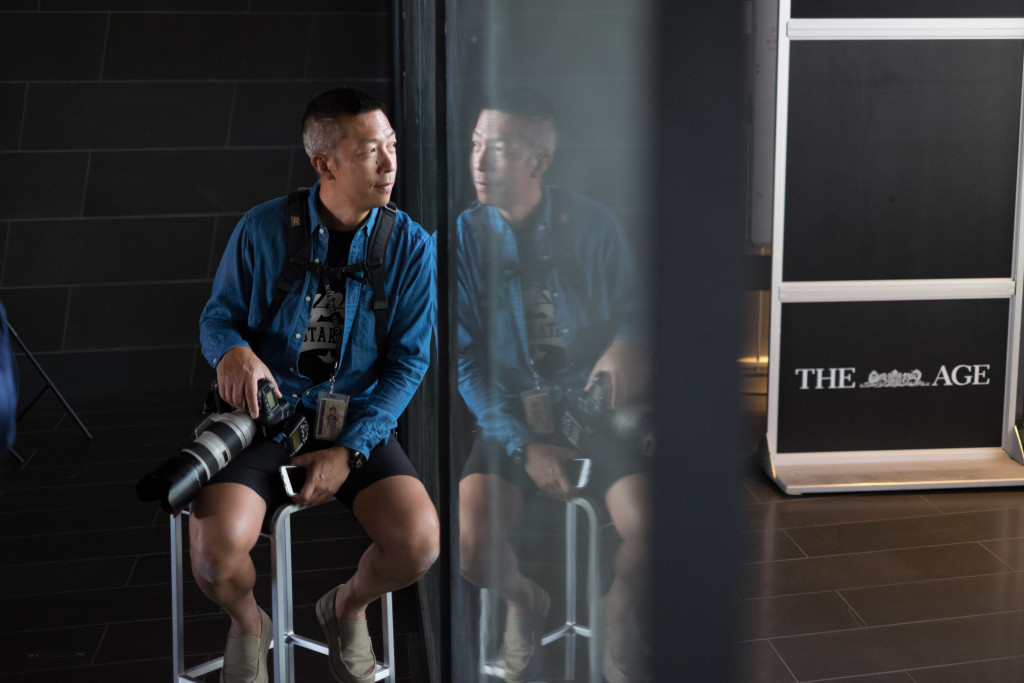
With Craig, I didn’t ask him in advance as I figured if I’d said ‘Can you come around for a video shoot and then some photos?’ it would seem like too much of an undertaking. Instead I set up the soft-box in advance (if you look in the background of the shot where Craig walks towards the camera you can actually see the soft-box set up in the background), and then when we had finished the video I said ‘Would you mind if I just grab a couple of shots, so that you’ve got some photos for the website.’ Talking on a video is more stressful than standing and having your photo taken…so he probably figured he had already done the hard yards…and besides, what did he have to lose? If he didn’t like the photos, he just wouldn’t use them.
In the end he used that shot on pretty much all of his web and social media content.
6. Take inspiration
You have so many options at your disposal when it comes to taking a photo. There are endless combinations of shutter speed, aperture and ISO…and that’s before you’ve even started composing the shot, or getting someone to pose or choosing a lens. So don’t be afraid to find something that you like, and then try to emulate it. I’m not saying you should make a career out of ripping off other photographers, but when you’re starting out…or if you’re in a creative rut, don’t be afraid to experiment and try to work out how they get the shots that you like. A friend of mine (Eli Mrkusich) introduced me to the work of Alain Laboile and I had a great time trying to recreate it with my kids…albeit without the French countryside…or the incredible light he captures…or his endless creativity…or his…look, let’s just say we were not only not in the same ball-park, but not even really playing the same sport. But it was fun, and photography should be fun!
With the photo of Craig I think I was trying to be somewhere between David Hobby and Zack Arias.
7. B&W
Friend, and fellow X-T1 enthusiast, Luke Vesty and I often have the same discussion where we have done a black and white execution of a shot and a colour execution…we feel that the black and white one is better, while our wives think the colour is better. We reassure each other that of course we’re right (and on top of that we’re brilliant photographers…and remarkably good husbands), but I do think that a lot of photographers have a weak-spot for black and white. It’s probably because growing up, the photos that had the biggest impact were black and white and so we are subconsciously trying to replicate them (it will be interesting to see if in 20 years time there are vast swathes of photographers with a weak-spot for the Instagram filter ‘Juno’). Whatever the reason, I love using black and white in portraits…and with a digital camera I don’t even have to be brave and commit to shooting on black and white film…I can just press ‘black and white’ in Lightroom! But going with black and white does also give you a lot of options in terms of pushing the contrast or colour balance without having to worry about someone’s skin tones suddenly looking like an Oompa-loompa.
I also think it adds a lot of gravity and sincerity to a shot. Seeing as I lack that in myself…I like to try to pretend I have it by putting it in my photos.
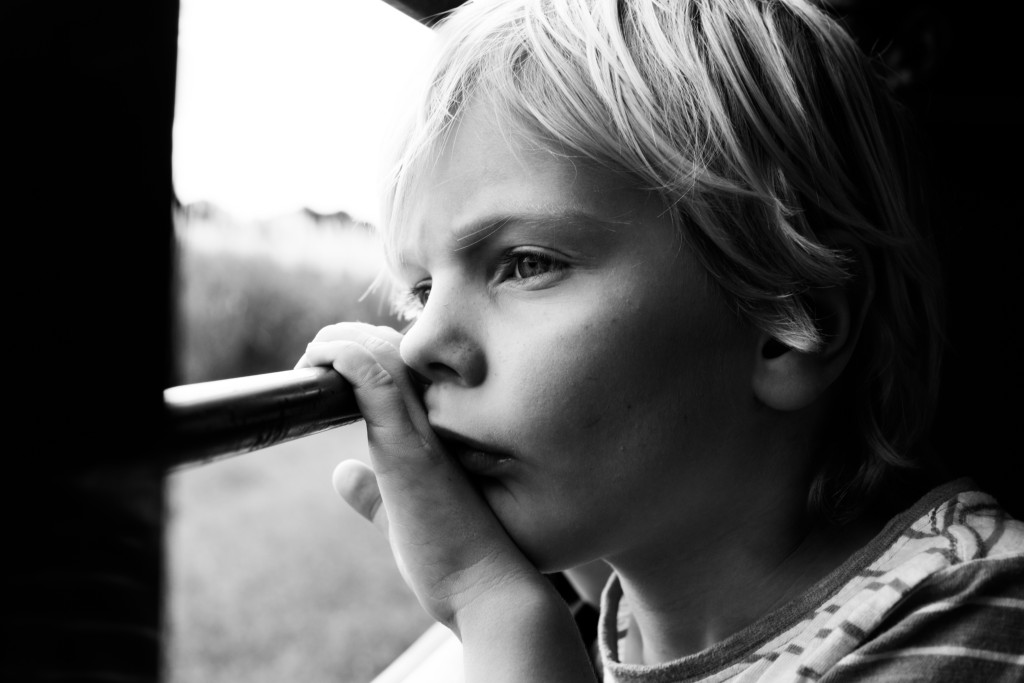
The photo of Craig actually worked really well in colour (as it was primarily a black t-shirt on a white background anyway)…but as this was the first time I’d used my new flash equipment I hadn’t learned how to angle the infra-red trigger away from the person in the shot…and so there was a horrible red cast over Craig and the wall behind him was a little bit pink. But you know what lets you hide amateur-hour mistakes you’ve made with colours? Black and white! So, black and white it was.
8. Change it up
There have been plenty of times when I’ve found a shot that I like, and then I’ve just fired off multiple versions of that shot. If I have half an hour with a person, I might take pretty much the same photo for 25 minutes, and then try something different for the last five minutes. Yet when I start working on the photos in post, it is invariably one of the photos where I’ve done something different that ends up being my favourite.
So by all means, take the shot that you’re comfortable with, but then change the lens, or shoot from up high, or from below the eyeline of the person, or change your orientation from portrait to landscape. Whatever it is, just think differently and make a change. You may not get a better photo, but you will learn, and you will keep your subject engaged and active.
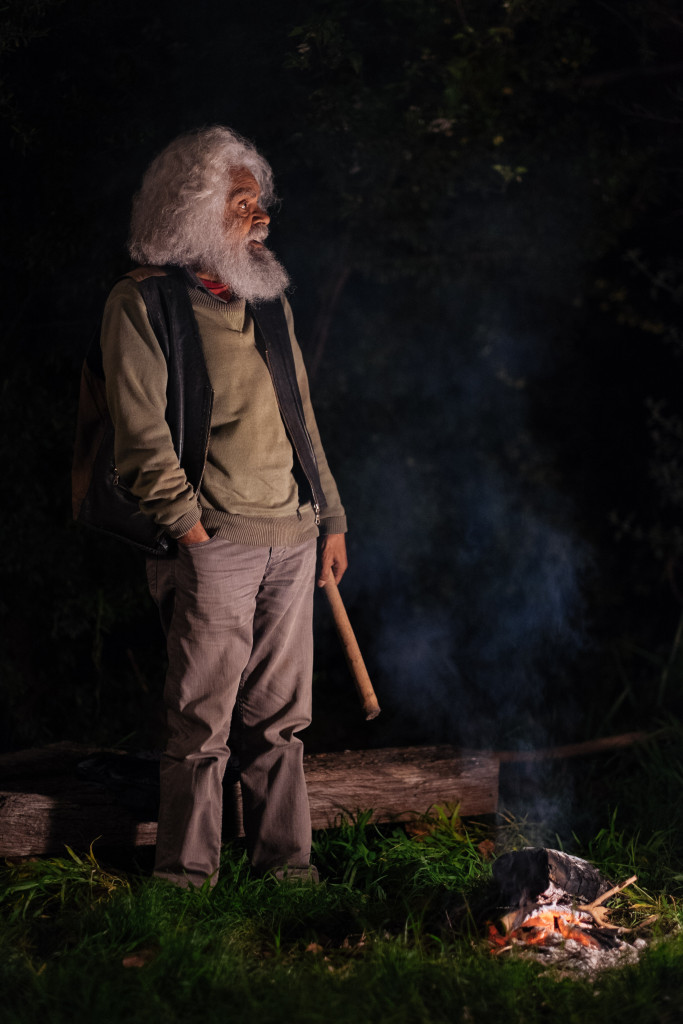
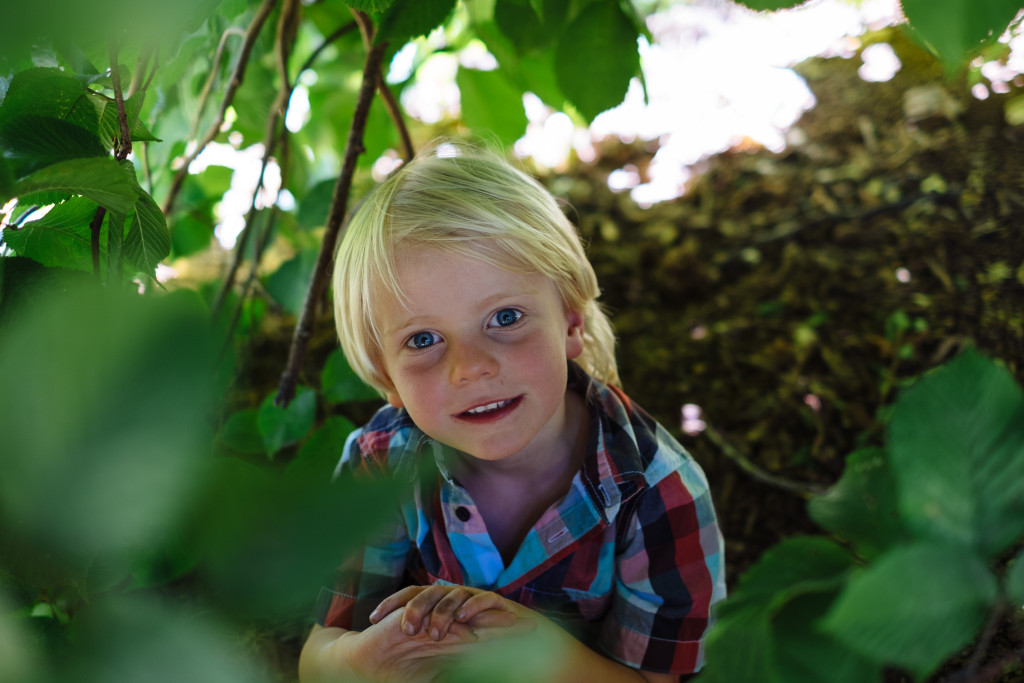

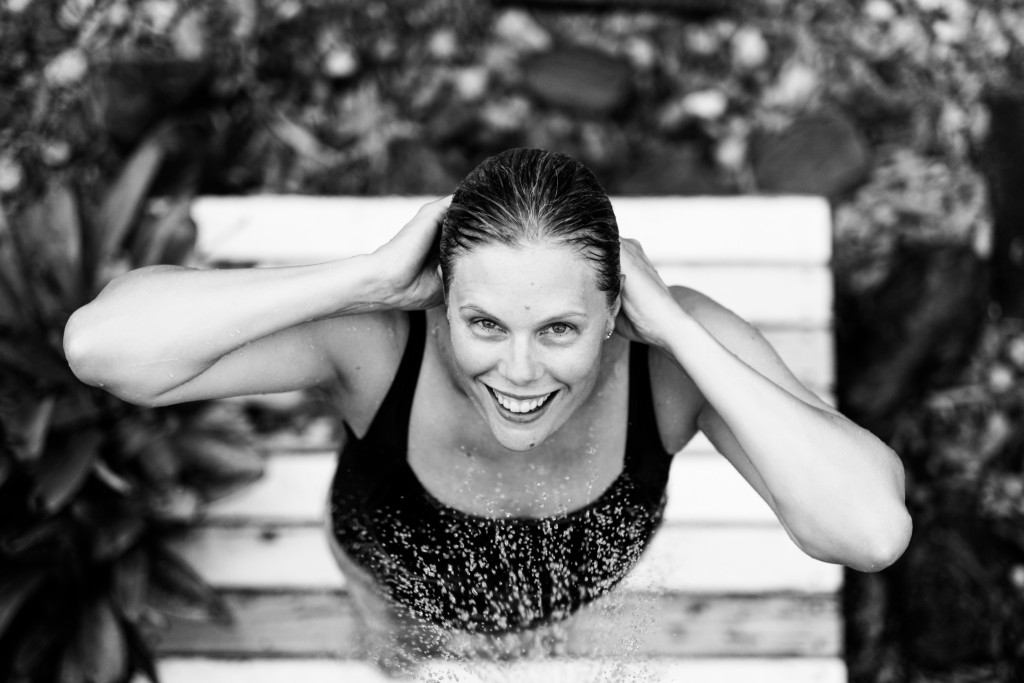
With Craig I did dance a little between a 35mm and a 56mm lens…and I reckon while the landscape version of his head and shoulders shot was the winner for the day…this portrait 3/4 shot could have been…if I’d only paid a bit more attention to not cropping out half of his hand!
So there you have it, 8 tips on taking better portraits. If you’ve learnt anything from this post…or if you’re just a decent human being…then please donate to the GoFundMe page. https://www.gofundme.com/helpcraigpercivalsfamily
Over the course of the 8in8in8 I got to spend some time with Lindell, Sam & Sienna and I know the hole that will be left in their lives by Craig’s death. While we can never replace their loss, we can always do our bit to help out.
Thanks,
Chris.
